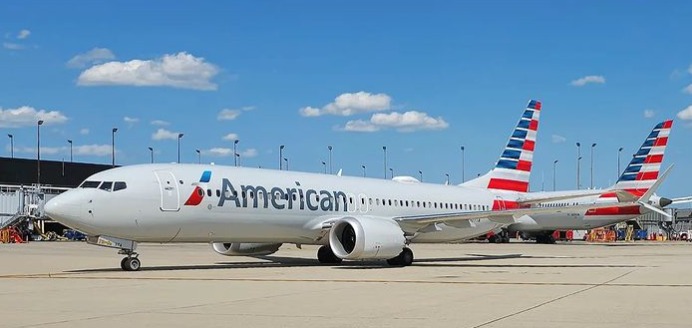American Airlines CEO Robert Isom said Flight 5342 had a “real impact” on its first quarter performance. The incident involved a CRJ700 operated by PSA Airlines as American Eagle colliding with a Black Hawk helicopter on January 29, 2025, killing 64 passengers and crew onboard the American flight and three crew of the helicopter.
Isom said during JP Morgan Industrials Conference on March 11, 2025, that, from a leadership perspective, “nothing has been more difficult than this quarter”.
On March 11, 2025, the company said it now expects revenue to be flat compared to the first quarter of 2024. American had previously estimated a 3-5% increase on the same period last year. Adjusted loss per share was guided at 60 to 80 cents loss per share. This was widened from previous estimates of 20 to 40 cents loss per share.
“Our intention has been making sure that we protect American over the long run and our reputation,” said Isom. “I believe that we have done that, and I do not believe that this incident will have a long term impact on the industry or American though that said it has had a real impact on this first quarter.”
Furthermore, the airline noted a softness in domestic leisure segment – primarily during March – with “economic uncertainty” at present. In addition, events such as the California wildfires impacted some of its larger hubs.
Capacity guidance was maintained at flat to a 2% increase, along with unit costs excluding fuel to be up high single digits. Isom said this “measured approach to capacity” has set up American well despite the current revenue environment.
“America has the greatest potential for recovery as we go forward because of some of the actions we took,” he added. The airline boss pointed to rectifying its “missteps” in its sales and distribution strategy, which had previously focussed on direct sales and saw pushback from travel agents and corporate customers. In addition, American had almost 150 aircraft on ground last year due to pilot shortfall for its regional airline segment, but the company is working to rebuild its northern tier hubs.
Isom added that company does not have “extraordinary capital requirements coming up” in 2025, with most of its fleet investment behind them.
“We invested up to the pandemic – over the prior seven to eight years – almost $30bn in aircraft,” he said. “We don’t have to go through that. Other [airlines] have a different path ahead of them. Ultimately, we’ve got a much stronger balance sheet and one that’s capable of weathering any type of storm that might be on the horizon.”
The company had set a target to reduce debt by $15bn by the end of 2025, which was achieved by the of 2024. The company then brought forward its subsequent $4bn reduction by the end of 2028 to the end of 2027.
American CFO Devon May said during the JP Morgan conference: “We should have excess cash to do something else with, and we'll have that decision to make… do we want to continue to accelerate the deleveraging, or do we want to do something else with that excess cash? Obviously, our first priority is investing back in the business, and we think we've made the right investments there.”
The airline said earlier in the year it expects 40 to 50 aircraft deliveries this year.
“That [amount] is really going to be dependent on how many airplanes Boeing can deliver,” said May. “They are making nice progress on the narrowbodies. For the widebodies, we’re still waiting on a handful there, so we’d like to see progress there… [Boeing] are doing a nice job right now, but the widebodies are a little bit to be determined for us.”
The company said its capacity and fleet plan would allow it to “pair back pretty easy” in the event of a softer demand environment.
Isom added: “As we look into 2026, we have a fleet that could allow us to grow 5-6%, but more likely we’re going to grow in line with economic growth. And if that continues to come down or if that is showing any signs of weakness, then we can pull back on that growth through some retirement of older airplanes, return of leased aircraft, or work on our delivery schedule.”

